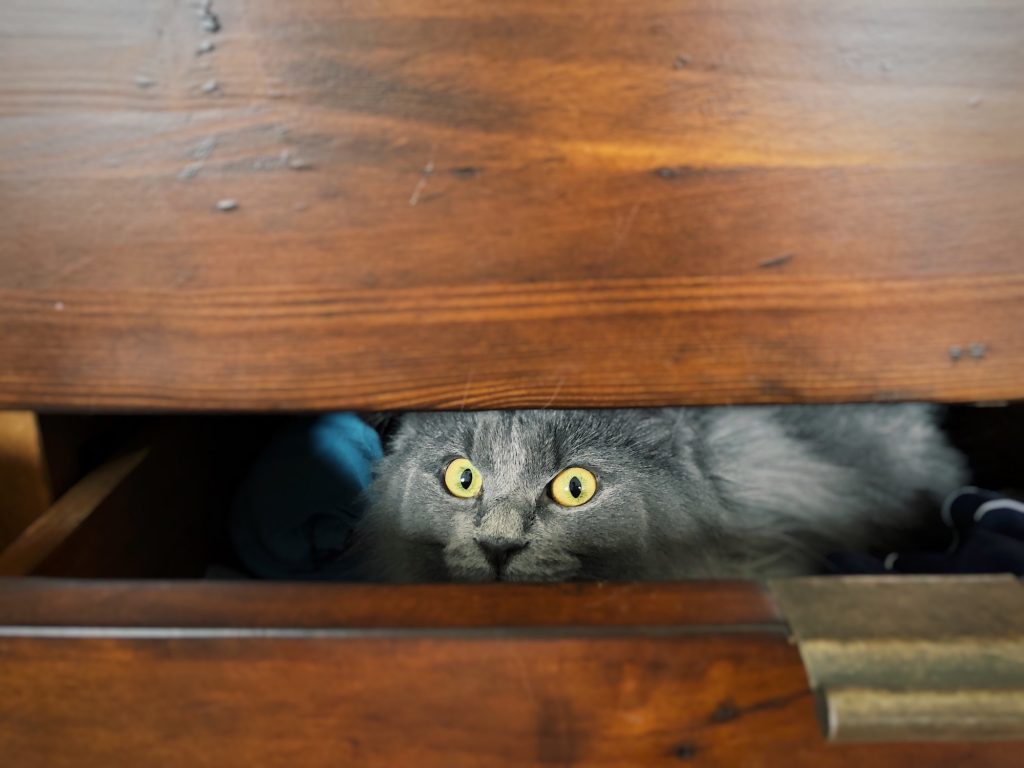
Have you ever returned home to find your shoes chewed to bits or your favourite cushion shredded? Do your pets seem overly stressed when you’re about to leave home? They might be suffering from separation anxiety. This article will explore the causes, signs, and solutions for separation anxiety in dogs and cats.
Causes of Separation Anxiety
Attachment
Pets, just like humans, can form strong emotional bonds with their owners. When their beloved human leaves, some animals experience anxiety that can manifest as destructive behaviours or excessive vocalization.
Boredom
Pets left alone for extended periods may become bored, leading to anxiety. A lack of mental stimulation and exercise can contribute to separation anxiety.
Past Trauma
Animals that have experienced neglect, abandonment, or frequent changes in their living environment might be more prone to separation anxiety due to their past experiences.
Signs of Separation Anxiety
Behavioural Changes
Common behavioural signs of separation anxiety include excessive barking or meowing, destructive behaviour, escape attempts, and inappropriate elimination. These behaviours usually occur when the owner is away and may intensify if the animal senses their owner’s impending departure.
Physical Symptoms
Pets with separation anxiety may also exhibit physical symptoms such as drooling, panting, or decreased appetite. In severe cases, these signs can lead to health issues, making it crucial to address the problem promptly.
Coping Strategies for Separation Anxiety
Gradual Desensitization
Help your pet become accustomed to your absence by leaving them alone for short periods and gradually increasing the duration. Pair your departures with positive experiences, such as treats or toys, to create a positive association.
Training and Mental Stimulation
Engage your pet in training exercises and provide mental stimulation through puzzle toys, treat-dispensing toys, or interactive play. These activities can help alleviate boredom and reduce anxiety.
Environmental Enrichment
Create a comfortable and stimulating environment for your pet when you’re not home. Provide comfortable resting spaces, toys, and, for cats, elevated perches or hiding spots.
Professional Help
Veterinary Consultation
If your pet’s separation anxiety persists, consult your veterinarian to rule out any underlying medical issues and discuss possible treatment options, such as medication or supplements.
Animal Behaviourists
A certified animal behaviourist can help develop a tailored plan to address your pet’s specific needs and provide guidance on managing separation anxiety.
Prevention Tips
To prevent separation anxiety, establish a consistent daily routine and create a calm environment for your pet. Gradually expose your pet to short periods of separation from an early age, and encourage independence by providing opportunities for solo play and exploration. Avoid making a big fuss when leaving or returning home, as this can reinforce anxiety.
Conclusion
Separation anxiety can be distressing for both pets and their owners. By understanding the causes, recognizing the signs, and implementing coping strategies, you can help your furry friend feel more secure and confident when left alone. In some cases, professional help may be necessary to manage the issue effectively. Patience and consistency are key to helping your pet overcome separation anxiety.
FAQs
1. Can both dogs and cats experience separation anxiety?
Yes, dogs and cats can experience separation anxiety, although it is more commonly reported in dogs.
2. What are some common signs of separation anxiety in pets?
Common signs include excessive vocalization, destructive behaviour, inappropriate elimination, and physical symptoms such as panting, drooling, or decreased appetite.
3. How can I help my pet cope with separation anxiety?
Gradual desensitization, training and mental stimulation, and environmental enrichment can help alleviate separation anxiety. In some cases, professional help may be necessary.
4. Can I take any preventative measures to reduce the likelihood of my pet developing separation anxiety?
Establishing a consistent routine, encouraging independence, and gradually exposing your pet to short periods of separation from an early age can help prevent separation anxiety.
5. When should I seek professional help for my pet’s separation anxiety?
Suppose your pet’s separation anxiety is severe, persistent, or causing harm to themselves or your property. In that case, it’s advisable to consult with a veterinarian or a certified animal behaviourist for guidance and support.